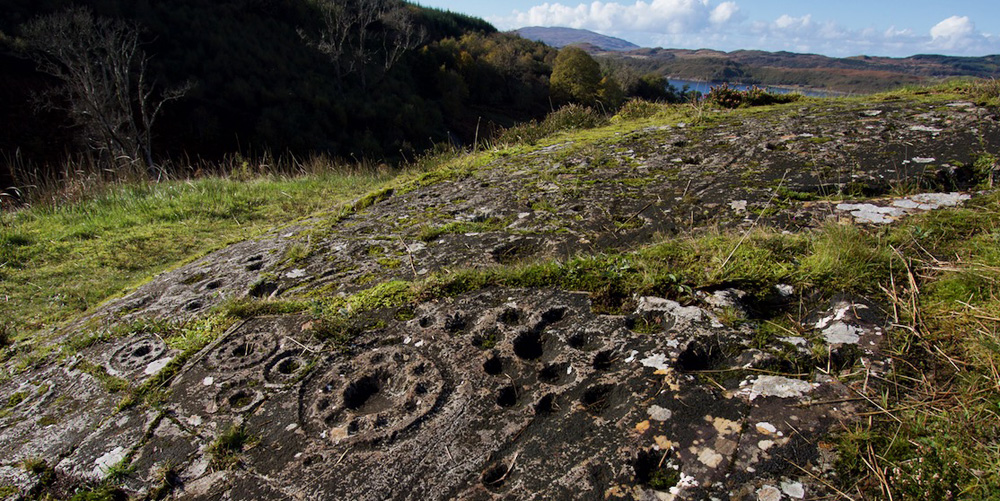
Rock art at Ormaig
Sunday was such a beautiful day that it would have been a crime not to go for a walk. But where? I fancied walking to Achnabreck, where there are some amazing cup-and-ring marked rocks, but Colin remembered reading about some other ones, equally as interesting, and we decided to visit those instead.
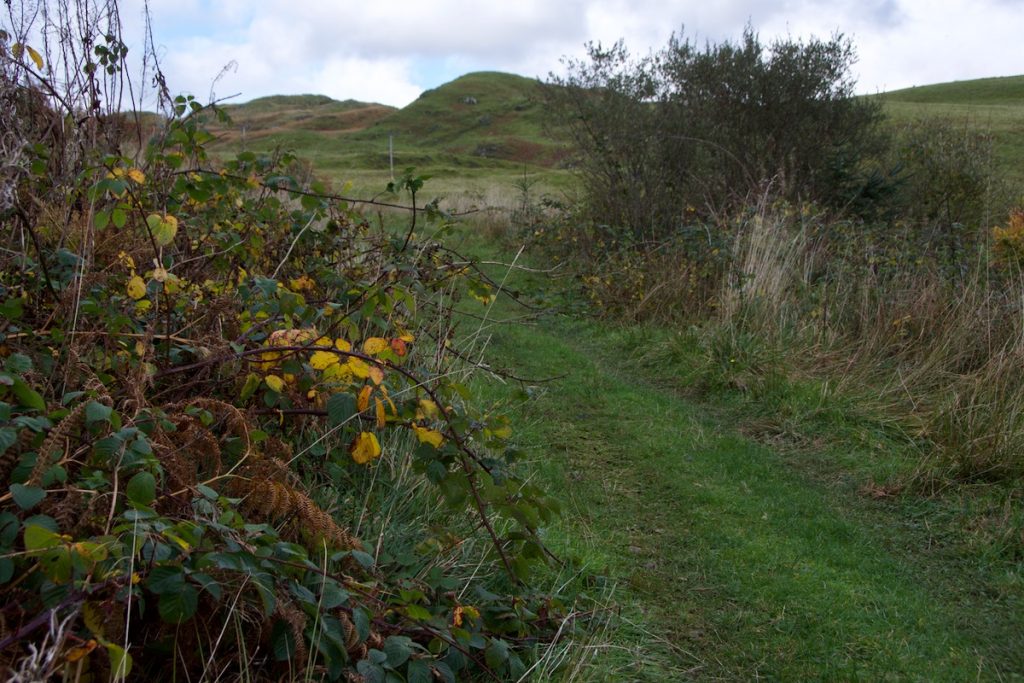
We found them on the Canmore website: they are at Ormaig, on the south side of Loch Craignish. To get to them, you have to park below Carnassarie Castle in Kilmartin Glen, and then follow a forestry track up the hill and down the other side. It’s a fair walk – about five miles there and back – but the views are fabulous, especially when you reach the top of the hill and look down over the glen.
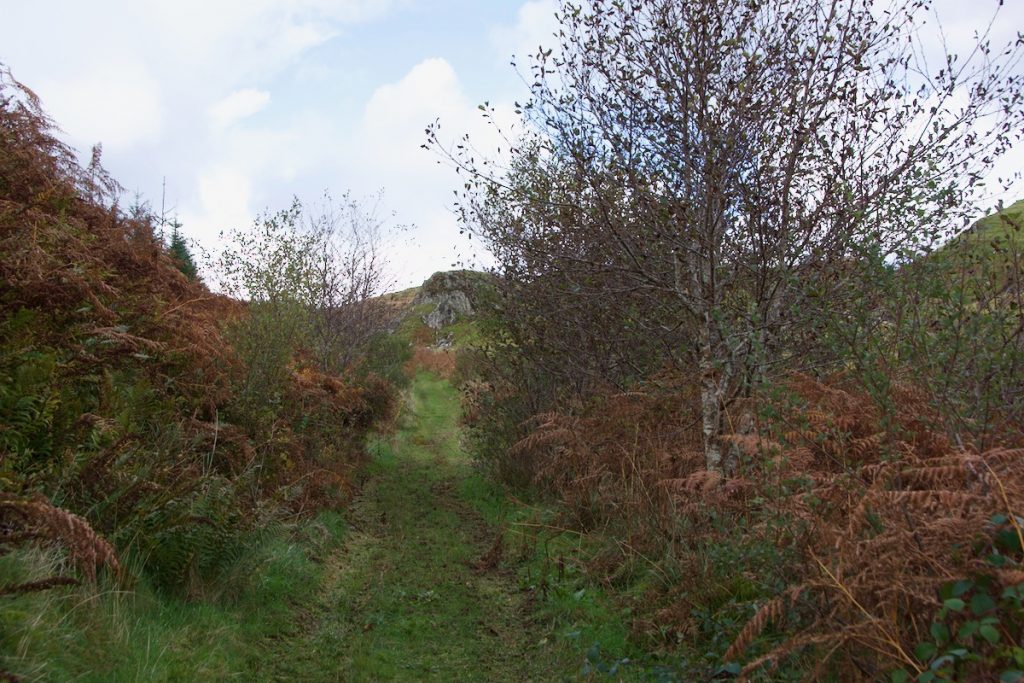
About ten minutes after starting out, we spotted a couple of standing stones among a field of cows on the left. A detour had to be made, to inspect them. Two quite similar stones in terms of size and proportion, standing side by side, and much bigger than they looked from a distance. Judging by the hoof marks all around them, the cows must find them useful for something – shelter, maybe, or possibly for pagan practices – although if they did, none of them were going to let on.
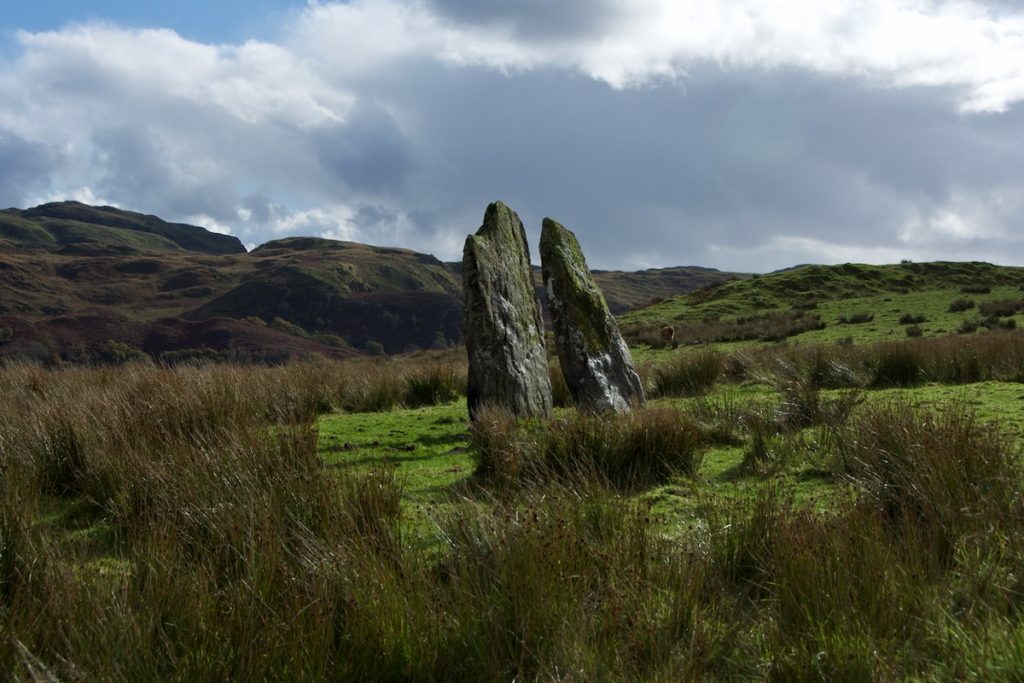
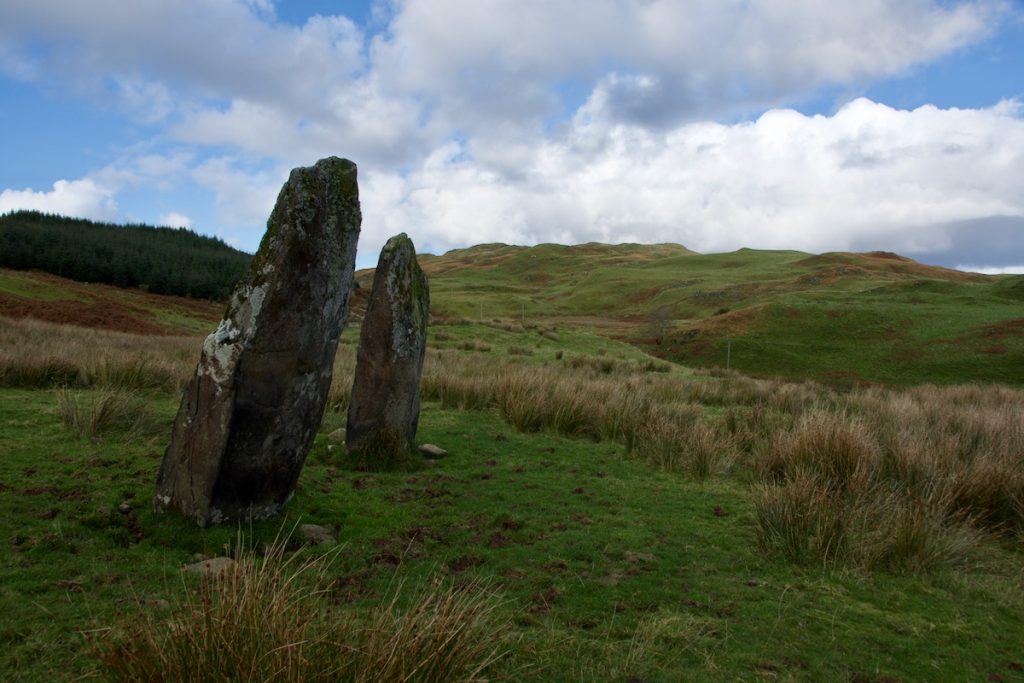
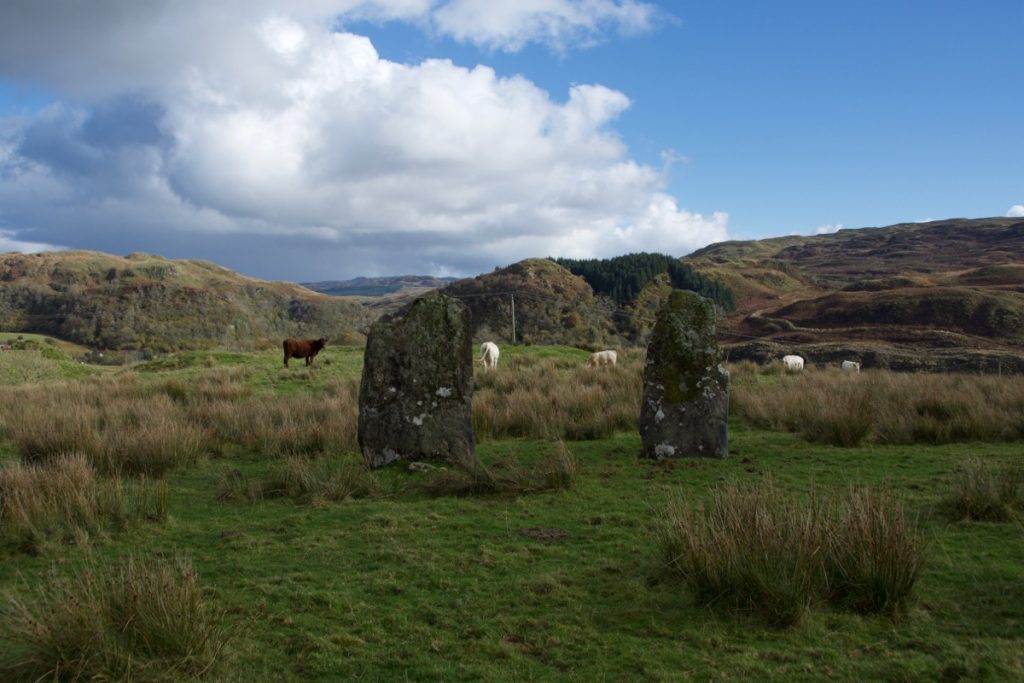
The walk wasn’t difficult, but I was glad I wore wellies. After all the rain, the track was flowing with water in places – lovely clear water, with waterweeds in it (and quite possibly baby fish, although I didn’t spot any!) We passed some stands of magnificent old firs, and carried on through some conifer woodland that has recently been cleared, while red deer stags roared from a distant glen. Down towards Loch Craignish, which was glinting blue in the distance and dotted with the white specks of boats at anchor in Ardfern; and then, doubling back on ourselves, we followed a footpath alongside a tumbling burn, turning to climb up the hillside for a few minutes as the panorama of the loch became even more magnificent.
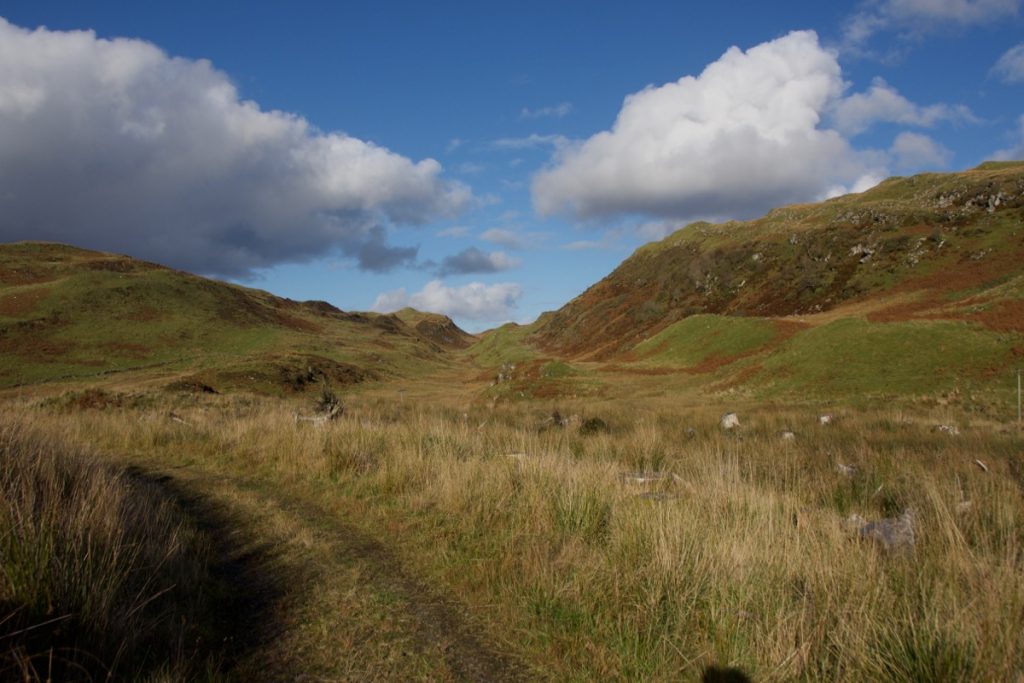
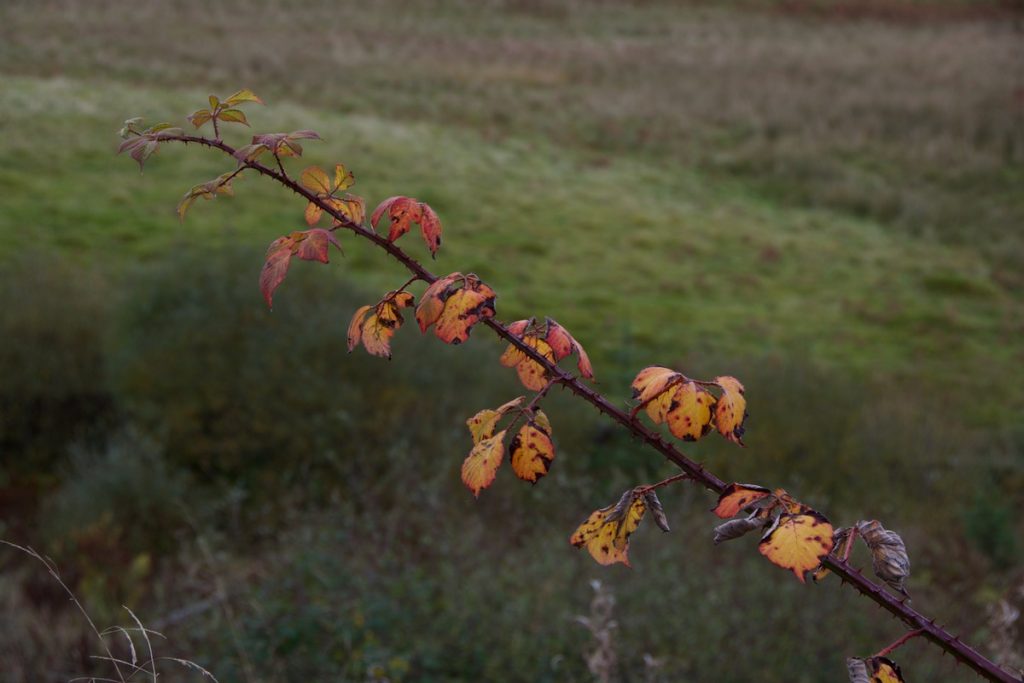

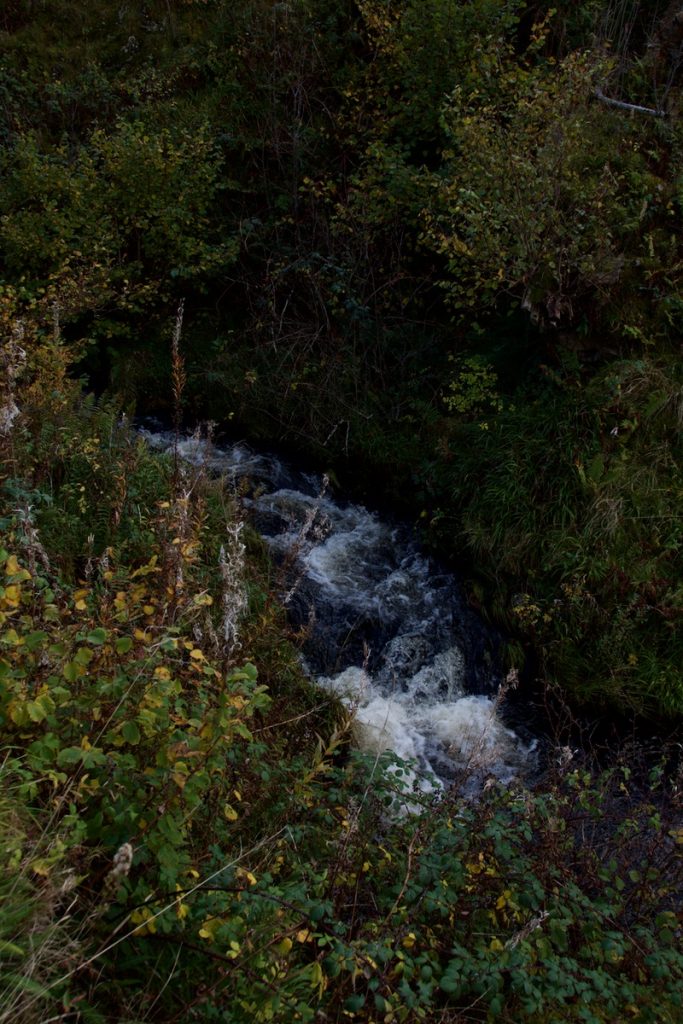
On flat beds of rock, clusters of circular shapes had been carved… small cup-marks arranged in neat circles, often with a larger, central hollow, giving the curious appearance of cogs in some kind of ancient machine. I haven’t seen these kind of ‘rosettes’ before – the ones at Achnabreck are more inclined to be concentric circles with a straight line cutting across them to the centre.
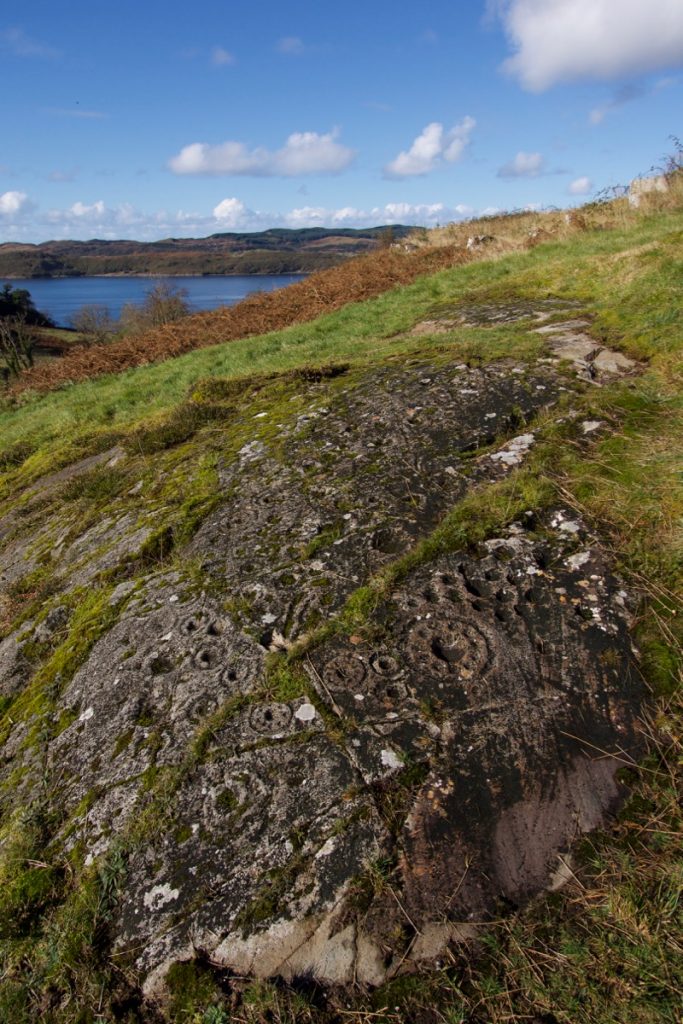
How old are they? Who made them? What do they represent? So many questions, and so few answers. It’s reckoned that the carvings may be over 5,000 years old; but as to their creators and their purpose, we know absolutely nothing – if, of course, they had a purpose at all. The closest you can get is by gently running your finger along the well-worn grooves, and trying to imagine the person who made them.
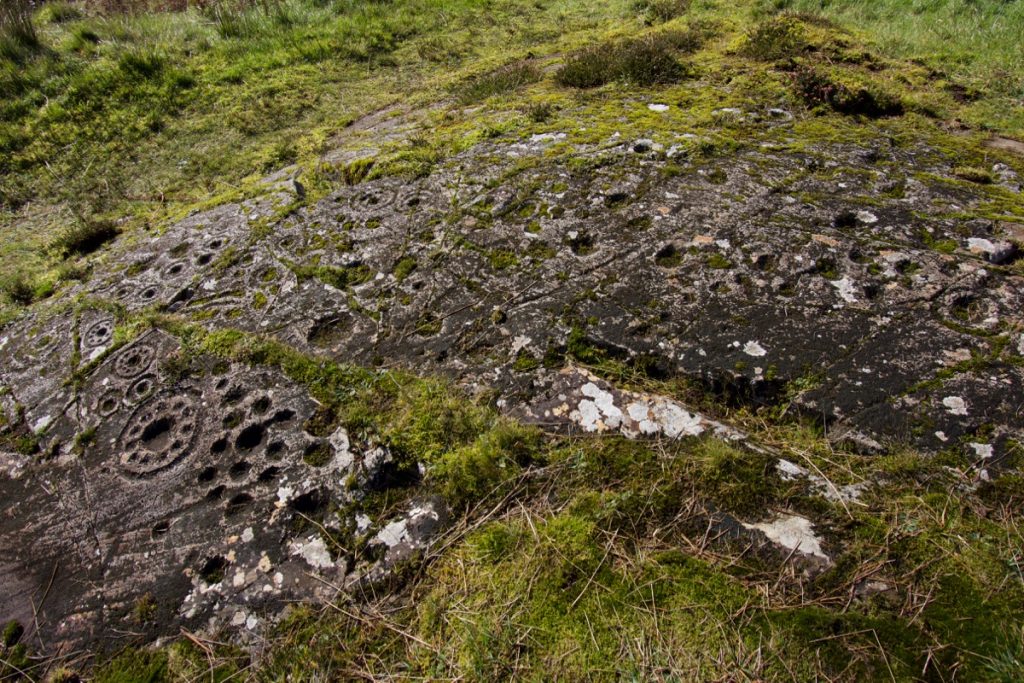
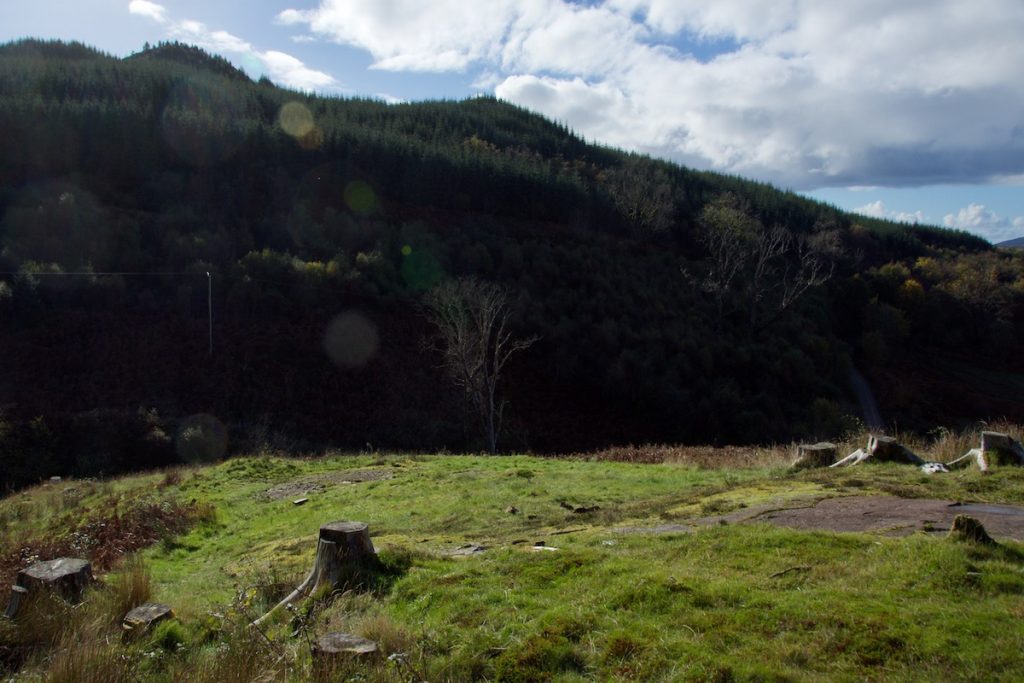
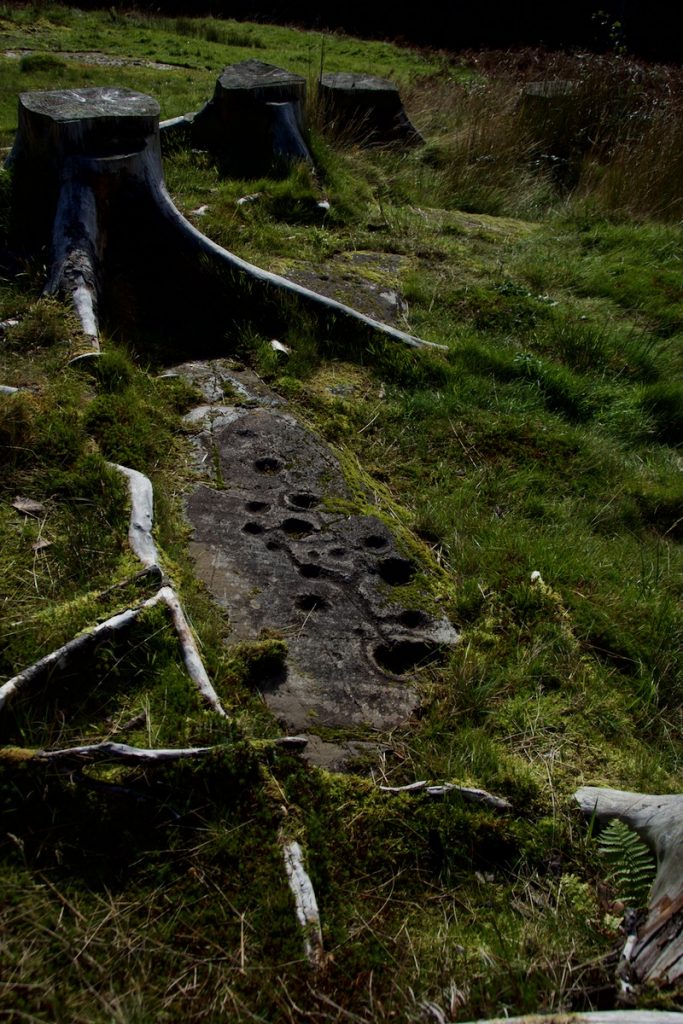
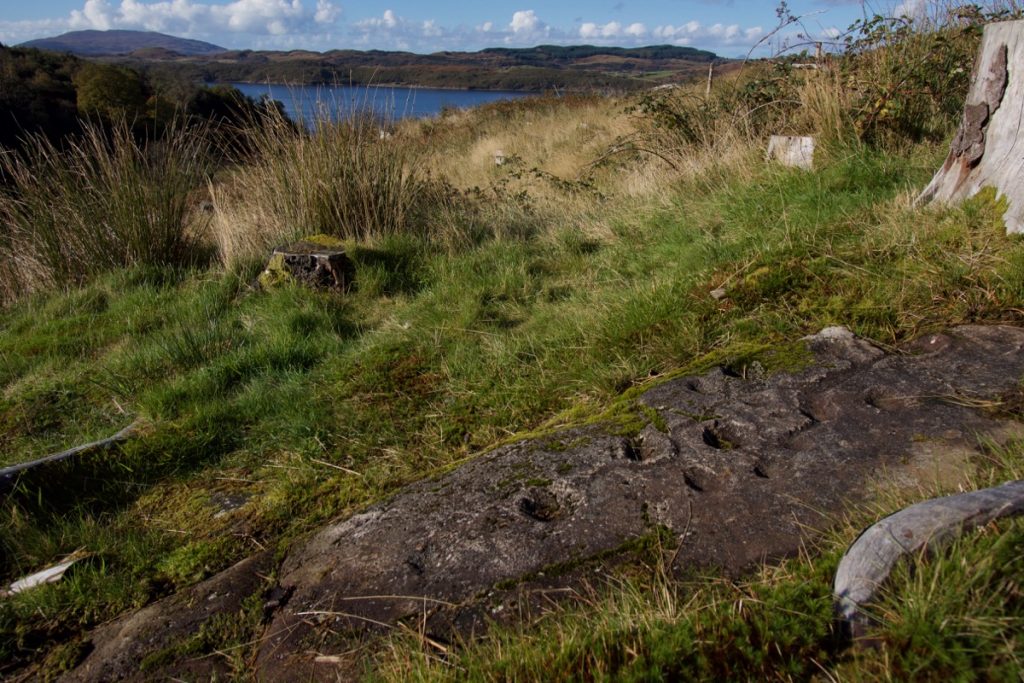 Some of the carvings have been exposed for a long time, while others were discovered relatively recently, in the 1970s. These must have lain for many years under a forestry plantation, and the stumps of some of the felled trees are dotted around the rock faces, their roots grasping the carvings like long-dead fingers. Nineteenth-century ‘graffiti’ has been carved on one of the surfaces – the names of the perpetrators, bold and clear, inscribed as “John Campbell” and “Archie Campbell” with the dates 1874 and 1877 respectively. We saw John’s name but not Archie’s, the letters now filled in by moss.
Some of the carvings have been exposed for a long time, while others were discovered relatively recently, in the 1970s. These must have lain for many years under a forestry plantation, and the stumps of some of the felled trees are dotted around the rock faces, their roots grasping the carvings like long-dead fingers. Nineteenth-century ‘graffiti’ has been carved on one of the surfaces – the names of the perpetrators, bold and clear, inscribed as “John Campbell” and “Archie Campbell” with the dates 1874 and 1877 respectively. We saw John’s name but not Archie’s, the letters now filled in by moss.
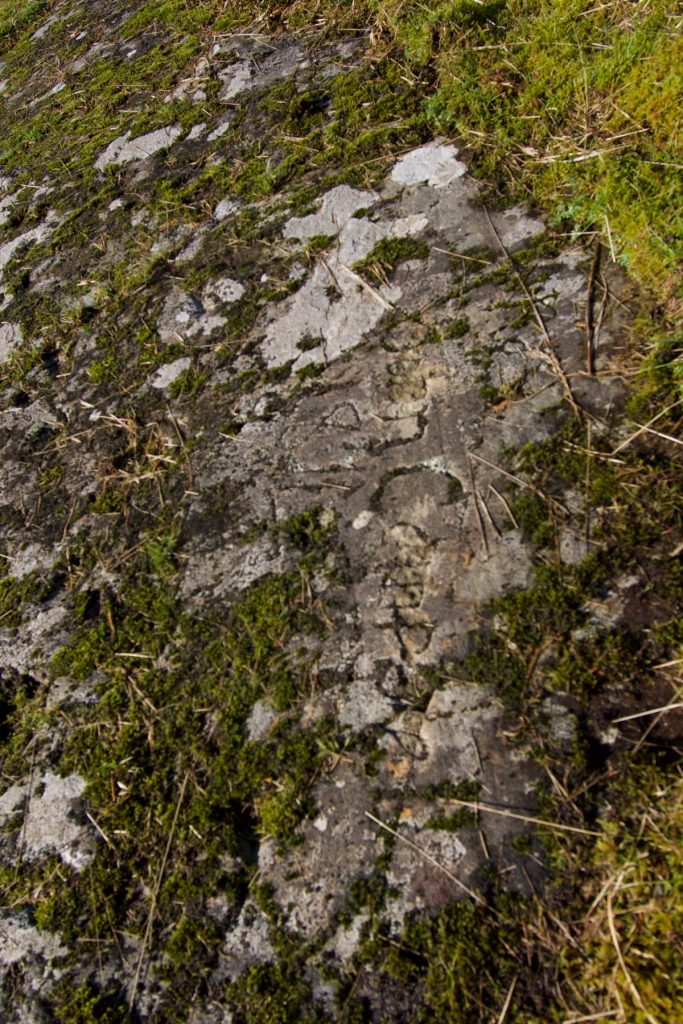
We clambered up the hillside to inspect all the visible sections of rock, and wondered how many more might lie undiscovered beneath our feet. Of all the ancient sites, I think rock carvings are the most enigmatic: there’s nothing really substantial, like a standing stone or a burial cairn, for your understanding to get a grip on. But there’s a freedom in that, because your reaction must be completely personal. For myself, I was reminded of a video I saw fairly recently, of a dowser who was finding pictograms in the energy of an ancient site (I think it was a castle). Following that line of thought, I wondered if these carvings were interpretations of some kind of earth energy, patterns that could be detected by people visiting the place, maybe even representing something that had happened there. But there are so many other possibilities… they could be symbols representing members of the same family… or interpretations of the night sky… or maybe they were intended purely as art, with no deeper meaning at all. What do you make of them? I’d be interested to know.
Anyway, it was a lovely thing to ponder on a Sunday afternoon. After an hour or so we wended our way back, as the sun started to sink behind the talls trees and the shadows grew longer. On the final descent we took a short cut through a reedy field with Carnassarie Castle looming darkly on our left, its shattered walls gaping.
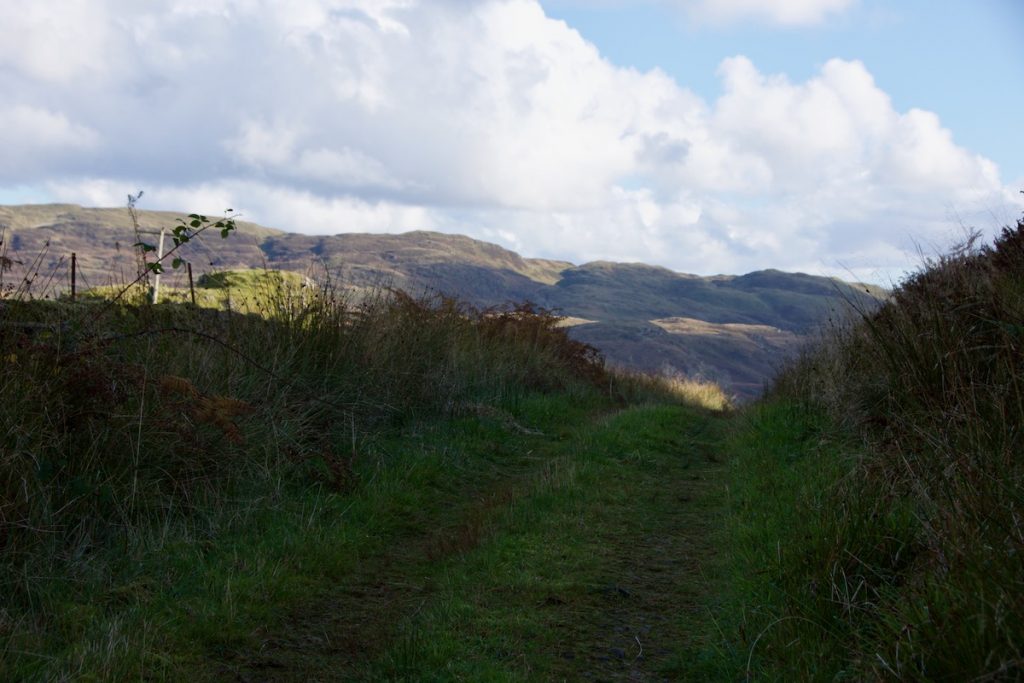
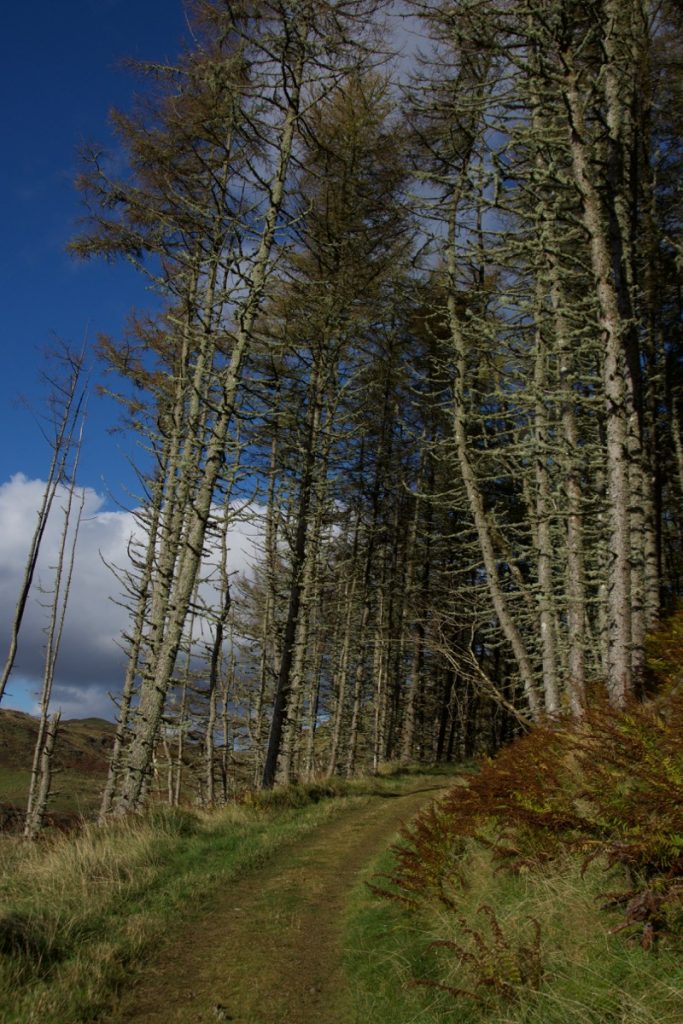
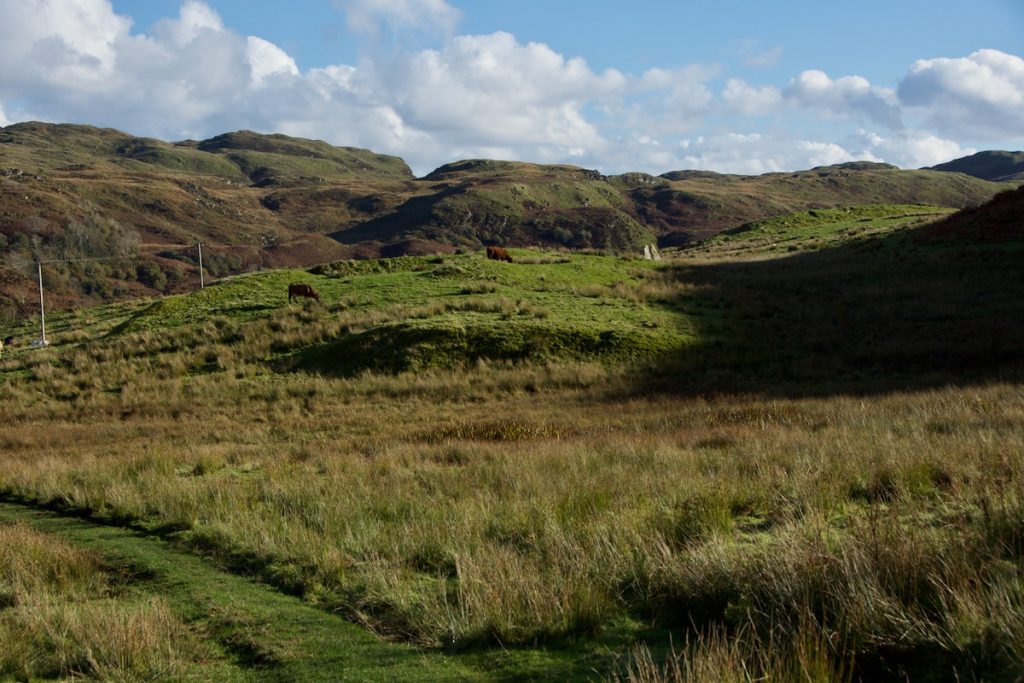
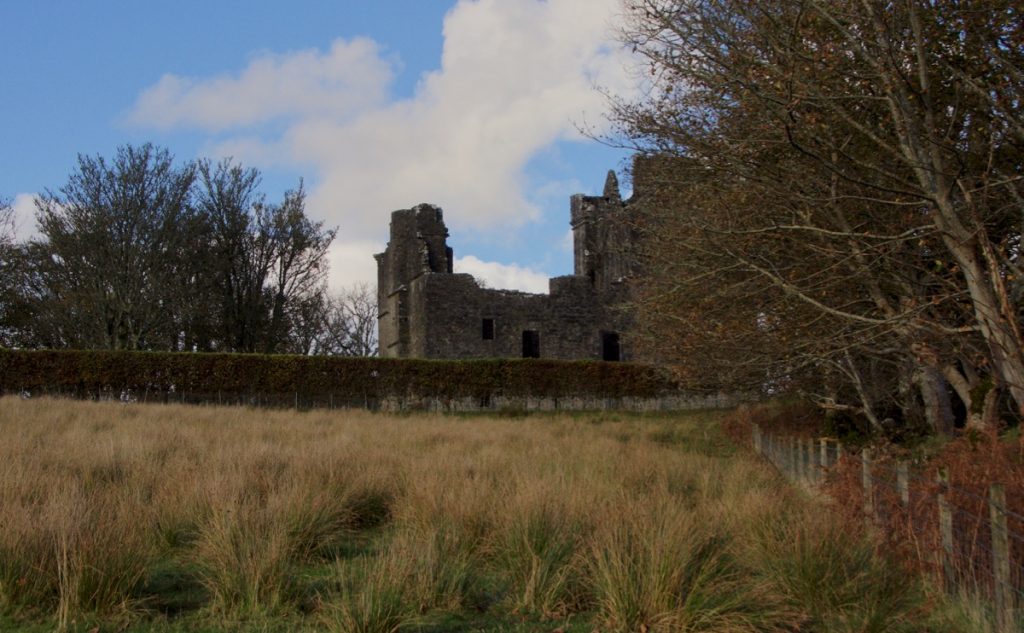
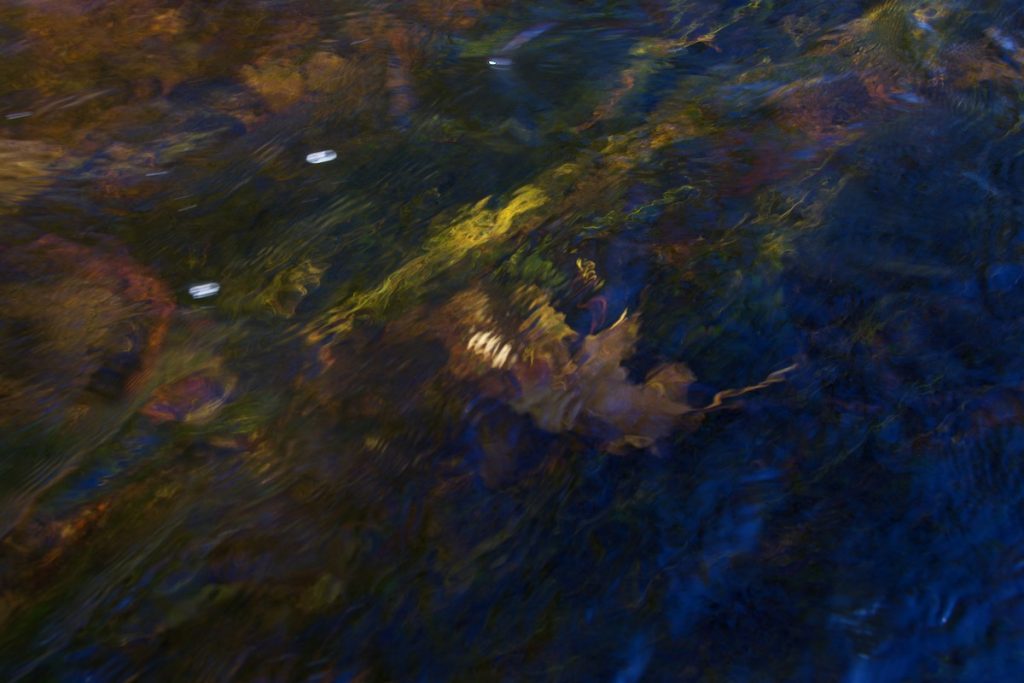
I wondered if any relics had ever been found at Ormaig. A survey by Kilmartin Museum says: “The artefacts recovered from the site comprise a substantial assemblage of fragmented quartz, the majority of which appears to be unworked, rounded pebbles of various lithologies and sizes, some of which may have functioned as hammerstones and the odd fragment of slate.” So… we might have found some of the tools, but their owners are still distant ghosts, about as tangible as the shape-shifting colours in the Kilmartin Burn which flows beneath the castle and down into the glen.
If you’d like to visit the Ormaig carvings, take a look at the Canmore website and click on the link that says ‘view on large map’. You can then zoom out and see the path for yourself. Be prepared for a long and occasionally muddy walk, especially if you want to look at the standing stones on the way.
More information:

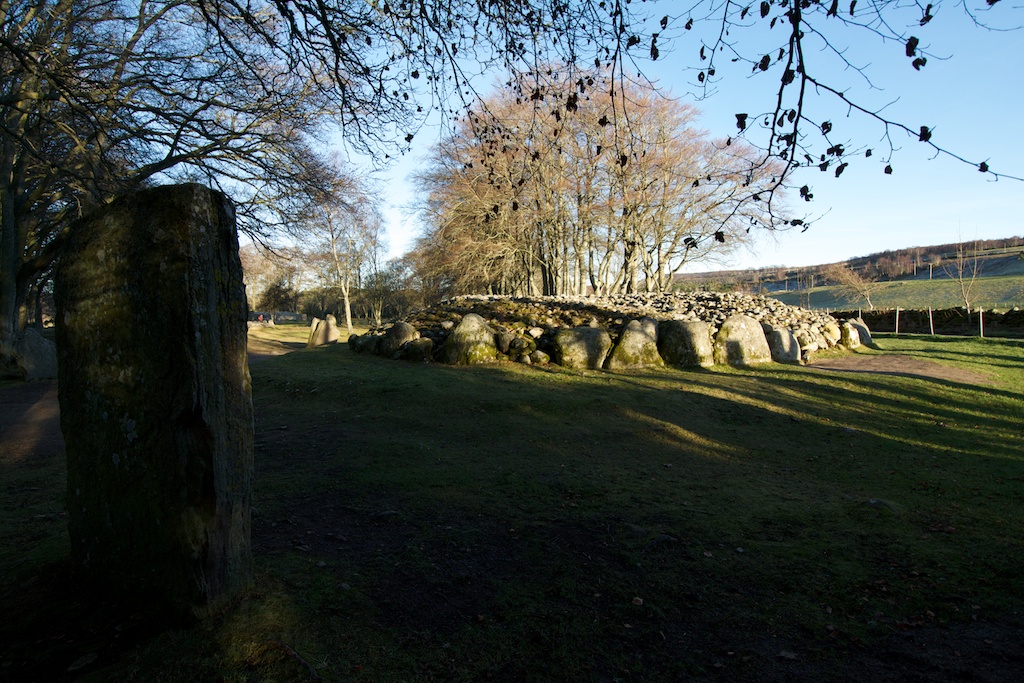
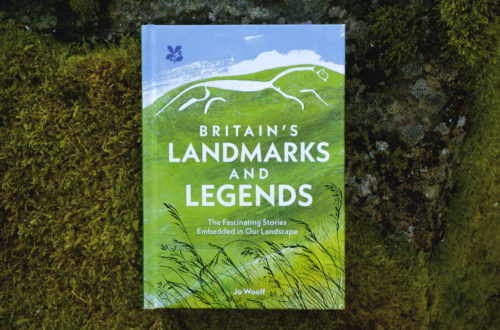
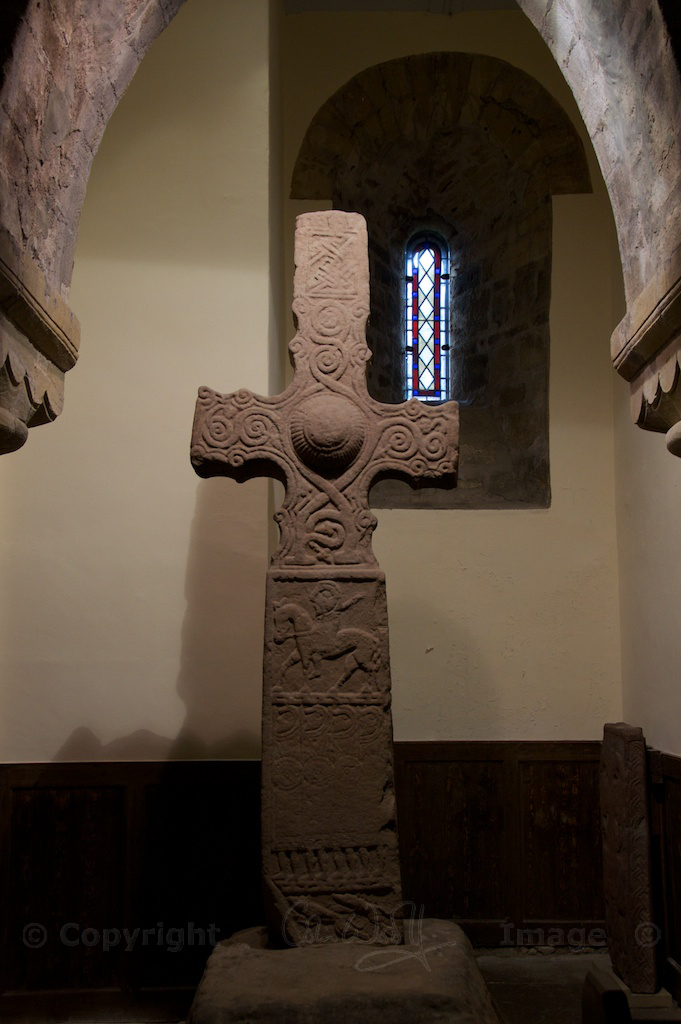
21 Comments
Scott K Marshall
Excellent you reappeared in my feed – cup holes I must investigate
Jo Woolf
Glad you re-connected, Scott! Nice to hear from you again. Yes, go look for some of these amazing rocks! This is a good website with some locations in Scotland and elsewhere: https://www.rockart.scot/
Linda Hartley
Thanks! I always enjoy your wanderings. I wonder if the marks might be something more prosaic, maybe made as a byproduct of some long forgotten craft. They are fascinating anyway.
Jo Woolf
Most welcome, Linda, and really glad to hear you enjoyed it. Yes, that’s an interesting idea – I like that. I even wondered if they were little paint-holders for artists! But they were on a bit of a slope so any liquid would have run out! 😀 Perhaps the best thing is that we’ll never know.
Jim Rule
Jo: Hazel Tree’s calm exploration of the often enigmatic beauties of Scotland always help me put this crazy world in perspective. Thank you.
Jo Woolf
That’s so lovely to know, Jim – I’m happy to hear that. Visiting and writing about these places helps me find peace too. There’s a deep truth here and I don’t think you have to understand it to connect with it.
Susan Abernethy
How beautiful Jo! Having just been to Scotland, there is so much amazing country and scenery. I loved every minute of it.
Jo Woolf
There is, Susan, and I was so happy to see some of the places you visited in your FB posts! Looks like you had an amazing trip. We really enjoyed finding this place – boggles the mind to think how long it’s been there, and how much it’s seen.
greg-in-washington
The photos make me wish I were standing there in Scotland now!
Jo Woolf
Ahh… wish they would hurry up and invent teleporting, Greg!
greg-in-washington
I maybe coming to Scotland sooner than I think, for visiting not sightseeing however.
Jo Woolf
Well in that case I hope you find time to enjoy it while you’re here! Have a safe journey.
Pat Webster www.siteandinsight.com
Reading this post and staring at the photos, I had shivers. The marks have a ghostly presence that is extraordinarily evocative. Like Jim Rule above, I am calmed and yet energized by your descriptions and your photos.
Jo Woolf
Ooh, that’s interesting, Pat! I love that you had that response from the photos, and from the post itself. Writing about them has a similar effect on me. There is energy in these places.
Finola
Great post, Jo, and your photographs are terrific.
Jo Woolf
Thank you, Finola! I was thrilled to come across your own site just now, and I’m really looking forward to reading your posts! Your own photos are fantastic. I can see you love these old paths! 🙂
Finola
Just shared your Ormaig post on the Irish Rock Art FB Page. Yes – I think we are fellow travellers. ?
bdean50
Oh, Jo! I can’t find words, but thank you. If I can’t be there in person, traveling with you online is “next best”.
Jo Woolf
That’s so lovely, and thank you too – I’m so lucky to be able to visit these places and share their magic!
Lorna
Those rock carvings are astonishing, I’ve never seen any so detailed. The scenery is breathtaking, you made a good decision setting out on a walk that day.
Jo Woolf
We were so intrigued by them – they are so deep and clear, and such striking patterns. Yes, breathtaking scenery! I did wonder at one point if we were ever going to get there! I can’t help wondering how much more rock art is hidden beneath woodland and bracken.